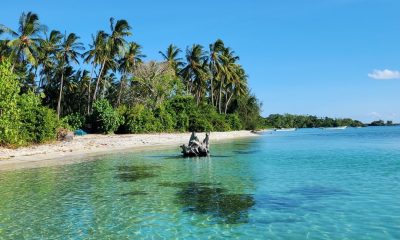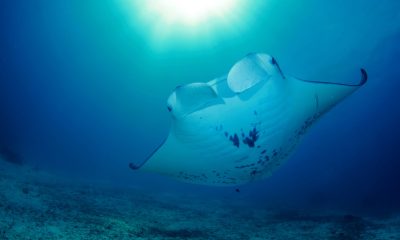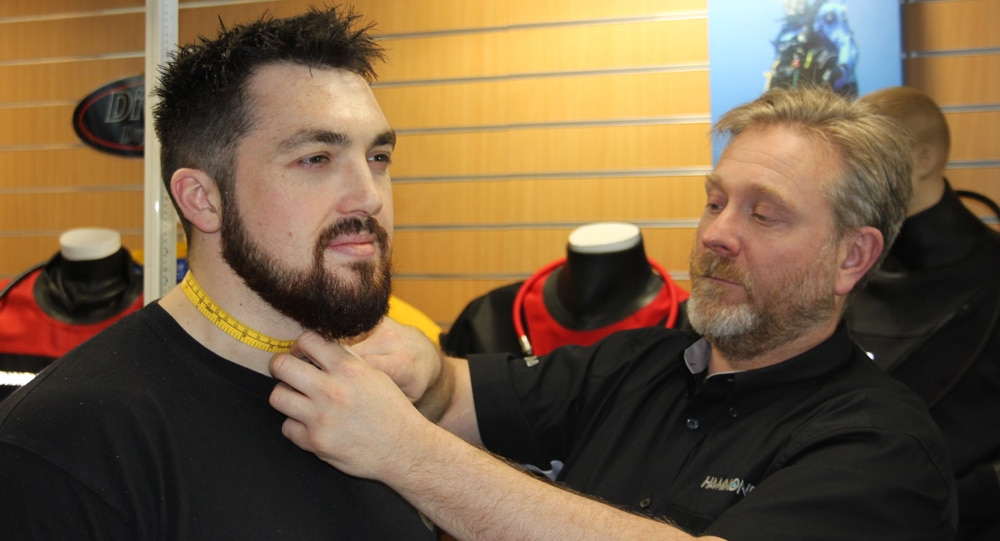News
Alex Mustard’s long-awaited new book ‘Underwater Photography Masterclass’ to be released in April
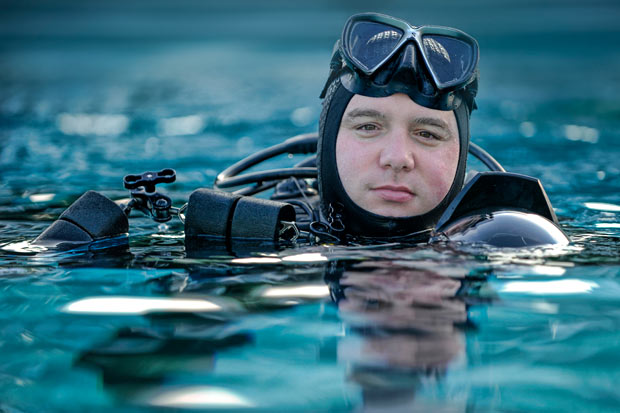
Soar Through Underwater Realms. Capture Untold Sights.
Published by Ammonite Press • April 2016 • RRP £19.99 (Pre-Order here)
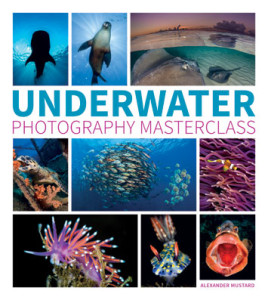 Take a voyage into the deep blue seas with this astonishing new book by one of the world’s leading underwater photographers, Alex Mustard. There is a fascinating alien world just waiting to be photographed and Underwater Photography Masterclass can teach you how to capture the amazing creatures and landscapes that lie beneath the surface.
Take a voyage into the deep blue seas with this astonishing new book by one of the world’s leading underwater photographers, Alex Mustard. There is a fascinating alien world just waiting to be photographed and Underwater Photography Masterclass can teach you how to capture the amazing creatures and landscapes that lie beneath the surface.
From information about diving equipment and cameras, to crucial advice on understanding and controlling light underwater, this book provides all the background you need before you take the plunge. Alex explains with humour and in straightforward language all of the technical aspects of shooting underwater. Topics covered include wide-angle and macro lighting techniques for subjects as diverse as sea slugs, sharks and shipwrecks. But he also advises readers on how to dive for your images – time is always limited underwater and stunning pictures come when you prepare and maintain equipment properly and know what is the perfect photographic technique for different subjects.
This isn’t just a guide either, as it is packed with stunning photographs from around the world; from shoals of fish in the Egyptian sea and gangs of spider-crabs in the UK to sunken wrecks in Grand Cayman and macro shots of pygmy sea-horses in Bali and Bigfin Reef Squid in West Papua.
Alex Mustard aims to expand your horizons of what underwater photography can be and fill you with ideas for the new types of images that you can produce. Underwater Photography Masterclass will help you create the underwater images you’ve dreamed of and make you a better, more knowledgeable photographer at the same time.
• Stunning underwater images from a world renowned underwater photographer
• Information on the equipment and skills you’ll need before you start
• In-depth explanations to help you master lighting underwater
Here is a trailer for ‘Underwater Photography Masterclass’:
And here are some photos from the book with descriptions from Alex:

Stingrays At Dawn: A split level image of two southern stingrays (Dasyatis americana) swimming over a sand bar in the early morning. The female (left) is much larger than the male (right), although the perspective of the photo accentuates the difference. Grand Cayman, Cayman Islands. British West Indies. Caribbean Sea. Alex Mustard: “You need to get up pretty early to be out in the middle of the sea in time for sunrise. But the rewards are surely worth it. I placed my camera half in and half out of the water, and positioned my flashes down beneath the surface to illuminate this pair of stingrays against the coming dawn.”

Nudibranch Portrait: A high magnification photo of a nudibranch (Nembrotha kubaryana), showing orange mouth parts and sensory rhinophores, and green gills (out of focus). Bitung, North Sulawesi, Indonesia. Lembeh Strait, Molucca Sea. Alex Mustard: “Photographing nudibranchs or sealsugs is all about colour. But since they have only very rudimentary eyes, they do not get to enjoy these colours themselves. Although they certainly benefit from them because they warn potential predators of their toxicity. This species has fluorescent pigments in their orange, making them glow underwater. I photographed this tiny individual at very high magnification to fill the frame with colour. This photo was awarded in the Wildlife Photographer of the Year competition.”

World War II bike: A backlit photo of a British World War II BSA M20 motorbike inside Hold 2 of the wreck of the Thistlegorm, with Red Sea soldierfish (crimson soldierfish: Myripristis murdjan).. Sha’ab Ali, Red Sea. Sinai, Egypt. Alex Mustard: “The British military transport ship SS Thistlegorm is a remarkable underwater museum, her holds packed with a range of British military vehicles, which have remained underwater for 75 years since she was sunk by German bomber during the Second World War. Here I placed two flashguns behind the motorbike to reveal its outline against the darkness of the ship’s internals.”
Pre-Order Underwater Photography by Alex Mustard here.
About the author
Dr Alex Mustard is one of the world’s leading underwater photographers and has been a pioneering voice in this field for the past 10 years. He has pioneered many techniques within underwater photography, which he shares through magazine articles, talks and workshops. His photographs have won many awards including, on six occasions, the BBC Wildlife Photographer of the Year. In 2013, Alex was named GDT European Wildlife Photographer of the Year for his image Night Moves. His last book, Reefs Revealed, won the International Grand Prize for the best book of underwater photographs. He is the inventor of the Magic Filters, filters designed specifically for available light underwater photography with digital cameras. He also runs highly popular underwater photography workshops at top diving destinations around the world. Previously, he worked as a marine biologist at the UK’s National Oceanography Centre in Southampton.
You can visit Alex’s website here.
Blogs
Northern Red Sea Reefs and Wrecks Trip Report, Part 2: Wall to Wall Wrecks

Jake Davies boards Ghazala Explorer for an unforgettable Red Sea diving experience…
The second day’s diving was a day full of wreck diving at Abu Nuhas, which included the Chrisoula K, Carnatic, and Ghiannis D. The first dive of the day was onto the Chrisoula K, also known as the wreck of tiles. The 98m vessel remains largely intact where she was loaded with tiles which can be seen throughout the hold. The stern sits at 26m and the bow just below the surface. One of the highlights of the wreck is heading inside and seeing the workroom where the machinery used for cutting the tiles are perfectly intact. The bow provided some relaxing scenery as the bright sunlight highlighted the colours of the soft coral reef and the many reef fish.

Following breakfast, we then headed to the next wreck, which was the Carnatic. The Carnatic is an 89.9m sail steamer vessel that was built in Britain back in 1862. She ran aground on the reef back in 1869 and remains at 27m. At the time, she was carrying a range of items, including 40,000 sterling in gold. An impressive wreck where much of the superstructure remains, and the two large masts lay on the seafloor. The wooden ribs of the hull provide structures for lots of soft corals, and into the stern section, the light beams through, bouncing off the large shoals of glass fish that can be found using the structure as shelter from the larger predators that are found outside of the wreck.

The final wreck at Abu Nuhas was the Ghiannis D, originally called ‘Shoyo Maru,’ which was 99.5m long and built in Japan back in 1969 before becoming a Greek-registered cargo ship in 1980. The ship then ran aground on the reef on April 19th, 1983, and now sits at the bottom at a depth of 27m. Heading down the line, the stern of the ship remains in good condition compared to the rest of the hull. The highlight of the wreck, though, is heading into the stern section and down the flights of stairs to enter the engine room, which remains in good condition and is definitely worth exploring. After exploring the interior section of the ship, we then headed over to see the rest of the superstructure, where it’s particularly interesting to see the large table corals that have grown at the bow relatively quickly considering the date the ship sank. After surfacing and enjoying some afternoon snacks, we made sure everything was strapped down and secured as we would be heading north and crossing the Gulf of Suez, where the winds were still creating plenty of chop.

The next morning, it was a short hop to Ras Mohammed Nature Reserve for the next couple of days of diving. The 6am wake-up call came along with the briefing for the first site we would be diving, which was Shark & Yolanda. The low current conditions allowed us to start the dive at Anemone City, where we would drift along the steep, coral-filled wall. These dives involved drifts, as mooring in Ras Mohammed wasn’t allowed to protect the reefs. As a dive site, Shark & Yolanda is well-known and historically had a lot of sharks, but unfortunately not so many in recent years, especially not so early in the season. However, there was always a chance when looking out into the blue.

The gentle drift took us along the steep walls of the site, with plenty of anemone fish to be seen and a huge variety of corals. It wasn’t long into the dive before we were accompanied by a hawksbill turtle, who drifted with us between the two atolls before parting ways. Between the two reefs, the shallow patch with parts of coral heads surrounded by sand provided the chance to see a few blue-spotted stingrays that were mainly resting underneath the corals and are always a pleasure to see. With this being the morning dive, the early sunlight lit up the walls, providing tranquil moments. Looking out into the blue, there was very little to be seen, but a small shoal of batfish shimmering underneath the sunlight was a moment to capture as we watched them swim by as they watched us.

Towards the end of the dive, we stopped at the wreck of the Jolanda where the seafloor was scattered with toilets from the containers it was carrying. This provided a unique site to make a safety stop, which was also accompanied by a large barracuda slowly swimming by, along with a hawksbill turtle calmly swimming over the reef as the sun rays danced in the distance.
For the next dive, we headed north to the Strait of Tiran to explore the reefs situated between Tiran Island and Sharm El Sheik, which were named after the British divers who had found them. We started on Jackson before heading to Gordons Reef, where we also did the night dive. All the atolls at these sites provided stunning, bustling coral reefs close to the surface and steep walls to swim along, which always provided the opportunity to keep an eye out for some of the larger species that can be seen in the blue. Midwater around Jackson Reef was filled with red-toothed triggerfish and shoals of banner fish, which at times were so dense that you couldn’t see into the blue. Moments went by peacefully as we enjoyed the slow drift above the reef, watching these shoals swim around under the mid-afternoon sun.

The night dive at Gordon’s Reef was mainly among the stacks of corals surrounded by sand, which was great to explore under the darkness. After some time circling the corals, we came across what we were really hoping to find, and that was an octopus hunting on the reef. We spent the majority of the dive just watching it crawl among the reef, blending into its changing surroundings through changes in colour and skin texture. It’s always so fascinating and captivating to watch these incredibly intelligent animals, in awe of their ability to carry out these physical changes to perfectly blend into the reef. Before we knew it, it was time to head back to the boat to enjoy a well-deserved tasty dinner prepared by the talented chefs onboard.
Check in for the 3rd and final part of this series from Jake tomorrow!
To find out more about the Northern Red Sea reef and wrecks itineraries aboard Ghazala Explorer, or to book, contact Scuba Travel now:
Email: dive@scubatravel.com
Tel: +44 (0)1483 411590
Photos: Jake Davies / Avalon.Red
Marine Life & Conservation
Double Bubble for Basking Sharks

 The Shark Trust is excited to announce that, for two more days only, all donations, large or small, will be doubled in the Big Give Green Match Fund!
The Shark Trust is excited to announce that, for two more days only, all donations, large or small, will be doubled in the Big Give Green Match Fund!
Donate to Basking in Nature: Sighting Giants
The Shark Trust is hoping to raise £10k which will be doubled to £20k. This will go towards Basking in Nature: Sighting Giants. And they need YOUR help to reach they’re goal.
The Shark Trust’s citizen science project is to monitor and assess basking sharks through sightings; encouraging data collection, community engagement, and promoting nature accessibility. This initiative aims to enhance health and wellbeing by fostering a deeper connection with British Sharks.
Campaign Aims
- Increase citizen science reporting of Basking Sharks and other shark sightings to help inform shark and ray conservation.
- Provide educational talks about the diverse range of sharks and rays in British waters and accessible identification guides!
- Create engaging and fun information panels on how to ID the amazing sharks and rays we have on our doorstep! These can be used on coastal paths around the Southwest. With activities and information on how you can make a difference for sharks and rays!
- Promote mental wellbeing through increasing time in nature and discovering the wonders beneath the waves!
Donate, and double your impact. Click Here
-

 News3 months ago
News3 months agoHone your underwater photography skills with Alphamarine Photography at Red Sea Diving Safari in March
-

 News3 months ago
News3 months agoCapturing Critters in Lembeh Underwater Photography Workshop 2024: Event Roundup
-

 Marine Life & Conservation Blogs2 months ago
Marine Life & Conservation Blogs2 months agoCreature Feature: Swell Sharks
-

 Blogs2 months ago
Blogs2 months agoMurex Resorts: Passport to Paradise!
-

 Blogs2 months ago
Blogs2 months agoDiver Discovering Whale Skeletons Beneath Ice Judged World’s Best Underwater Photograph
-

 Gear Reviews2 months ago
Gear Reviews2 months agoGear Review: Oceanic+ Dive Housing for iPhone
-

 Marine Life & Conservation2 months ago
Marine Life & Conservation2 months agoSave the Manatee Club launches brand new webcams at Silver Springs State Park, Florida
-

 News3 months ago
News3 months agoWorld’s Best Underwater Photographers Unveil Breathtaking Images at World Shootout 2023







